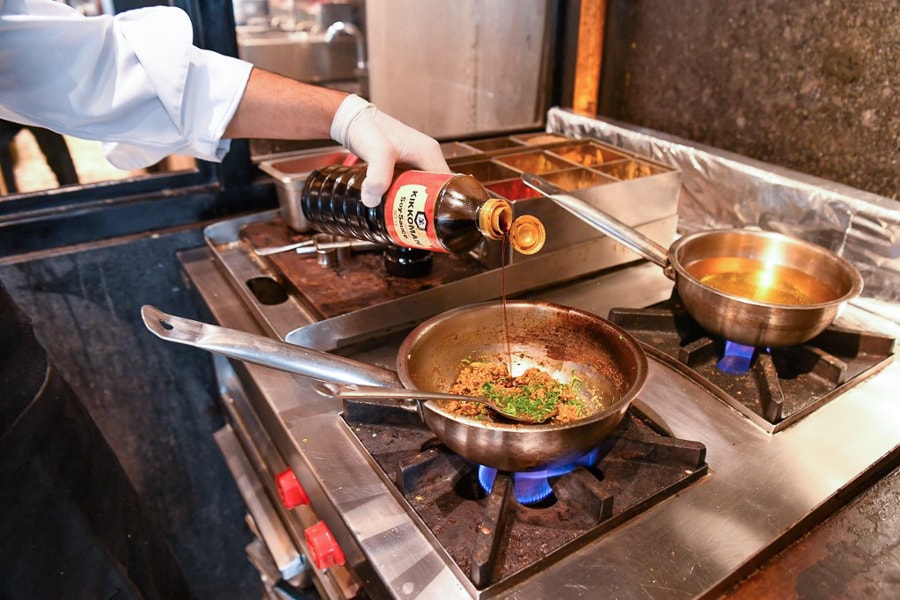
Japanese giant Kikkoman wants soy sauce to be the 'ketchup of India'
Convincing 1.3 billion people to add a staple of East Asian cuisine to their butter chicken and samosas is no cakewalk
 In this picture taken on July 16, 2021 a chef prepares a samosa filling with mince meat with Kikkoman Soy Sauce at the Ishaara restaurant in Mumbai.
In this picture taken on July 16, 2021 a chef prepares a samosa filling with mince meat with Kikkoman Soy Sauce at the Ishaara restaurant in Mumbai.
Image: Indranil Mukherjee / AFP
Every dish tastes better with a dash of soy sauce, even dessert: that's the ambitious pitch of Japanese food giant Kikkoman, hoping to persuade Indians to use it in curries, sweets and everything in between.
Convincing 1.3 billion people to add a staple of East Asian cuisine to their butter chicken and samosas is no cakewalk but it will likely be easier than the brand's 1960s push into the United States.
"When we entered the US, people thought we were selling bug juice because of its dark colour," Harry Hakuei Kosato, Kikkoman's India representative, told AFP.
Today the brand's funnel-shaped dispenser is a ubiquitous presence in US households, accounting for half of the firm's $4.4 billion revenues, and Kikkoman now hopes to replicate that success in India.







